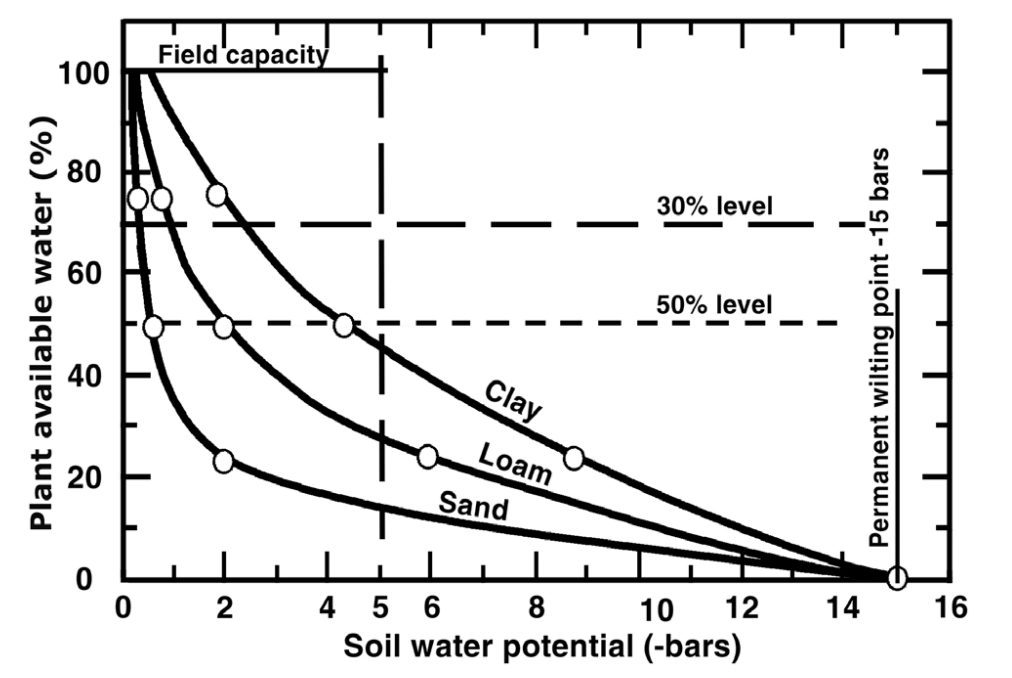
When the soil profile is full of water, reaching what is called field capacity (FC), the profile is said to be at 100% moisture content or at about 0.1 bars of tension. Tension is a measurement of how tightly the soil particles hold onto water molecules in the soil: the tighter the hold, the higher the tension. At FC, with a tension of only 0.1 bars, the water is not being held tightly and it is easy for plants to extract water from the soil. As the water is depleted by the plants, the tension in the soil increases. Figure 1 shows three typical curves for sand, clay and loam soils. As Fig. 1 shows, the plants will use the water in the soil until the moisture level goes to the permanent wilting point (PWP). Once the soil dries down to the PWP, plants can no longer extract water from the soil and the plants die. Although there is still some moisture in the soil below the PWP, this water is held so tightly by the soil particles that it cannot be extracted by the plant roots. The PWP occurs at different moisture levels depending on the plant and soil type. Some plants, which are adapted to arid conditions, can survive with very little moisture in the soil. With most agronomic crops, PWP occurs when the tension in the soil is at 15 bars. This means that the soil is holding on very tightly to the water in its pores. In order for plants to use this water, they must create a suction greater than 15 bars. For most commercial crops, this is not possible. At 15 bars, most plants begin to die. The difference between field capacity and PWP is called the plant available water (PAW).
Irrigation targets are usually set as a percent depletion of the PAW. This depletion level is referred to as Management Allowable Depletion (MAD). The bulk of irrigation research recommends irrigating row crops such as grain or cotton when the MAD approaches 50%. For vegetable crops, the MAD is usually set at 40% or less, because they are more sensitive to water stress. These defined amounts insure that water stress will not be so severe as to cause any appreciable yield losses. Careful monitoring of the PAW needs to be done throughout the season so that the appropriate point of irrigation can be anticipated.